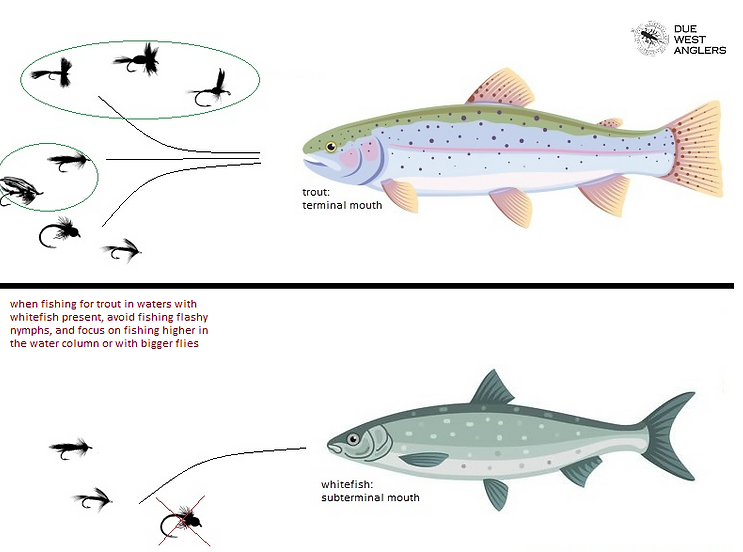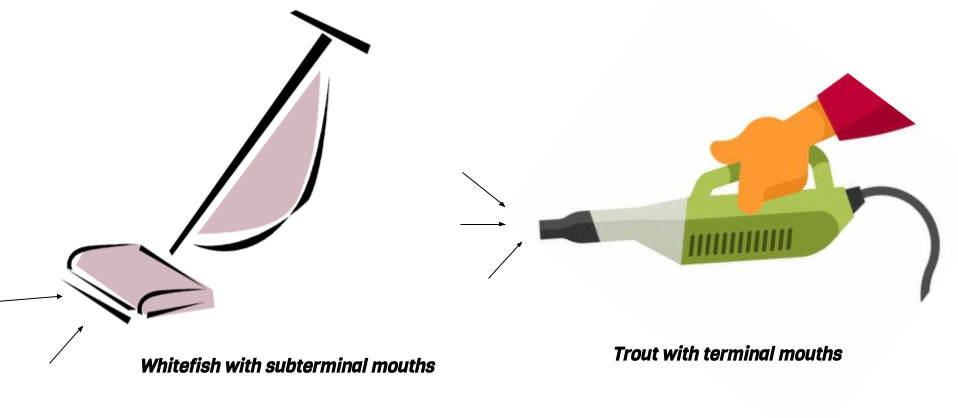Science Informed: Catch More Trout and Less Whitefish
Tired of catching only whitefish and no trout? Ever wonder why that happens when you're fly fishing? Look no further

July 2019
If you've ever fished rivers where trout and whitefish coexist, you know the deflation of realizing that the fish on the end of your line isn't the massive trout you hoped. Instead, you pull in whitey after whitey and quickly begin to disdain these under-appreciated fish. But you shouldn't blame these fish for doing what they do best: sucking up nymphs that are bouncing deep off the bottom of a stream.

Whitefish have sub-terminal mouths, meaning their mouths are oriented toward the river bottom. Other sub-terminal species include suckers and carp. The mouth orientation of these fish offer clues to anglers about how they prefer to feed. Whitefish, suckers, and carp, with their downward facing mouths, tend to eat food off the bottom of their environment. On the other hand, trout have terminal mouths, meaning their mouths open straight down their snout, and favor neither upturned nor downturned feeding. Trout are therefore more versatile feeders.
Pretty easy right? Now we can strategize our angling tactics accordingly.
1. Avoid the deep nymphing rig with whitefish sized flies: Whitefish are prone to flashy flies, and a #16 beadhead nymph fished deep enough is as irresistible to them as Cheetos are to me. If you're used to fishing deep multi-fly rigs for trout and find yourself in a situation where you're only bringing in ol-whitey, try to increase the fly/hook size. Larger hooks can be more difficult for whitefish to inhale, though sometimes they will still try.
2. Fish higher in the water column if you can get away with it. I believe that in systems where trout and whitefish coexist, trout will rise to flies more frequently than trout that live in systems without whitefish. This is theoretically supported by evolutionary and ecological theory through the concept of resource partitioning. These two species forage differently to stake a claim to the available food in the river; one eats more on top while the other eats more on the bottom. This happens so both can avoid competing with each other over the same food sources. Over time, this would explain why the mouths of these two species evolved differently. So what does that mean for anglers? Attracting fish with dries and shallow emergers give the angler a better shot at catching trout when whitefish are present.
3. Big flies are simply hard for whitefish to eat because they evolved to specialize in eating small, drifting bugs. So if that juicy deep run must be fished, try either stripping or dead drifting a streamer through the trough. Trout are typically the apex predators in stream systems, and the big ones are always on the lookout for a substantial meal.
Remember: Don't assume the double nymph rig will get you where you need to go! Rigging up the "Denver Double" might not be the smart move if you're targeting trout in whitefish country.


